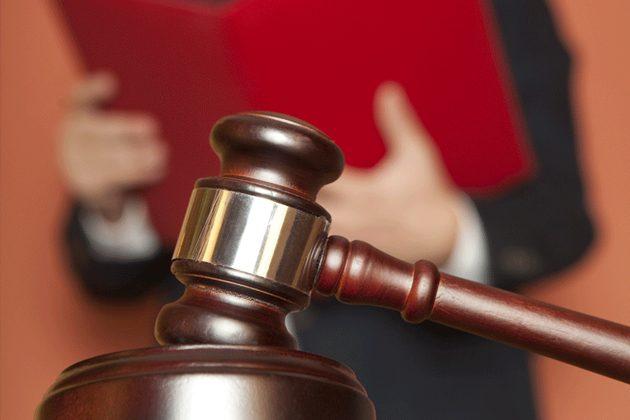The High Court occupies the top position in the judicial administration of state.
The first High Courts were set up in India in Calcutta, Bombay and Madras in 1862.
In the year 1866 the fourth High Court was set up in Allahabad.
The 7th amendment (1956) Act authorized the Parliament to establish a common High Court for 2 or more states.
At present there are 24 High Courts in the country.
The Security of tenure is provided to the judges of High Courts by the Constitution. This means the judges of High Court can be removed by the President only in the manner and on the grounds mentioned in the Constitution.
The Judges of the High Court do not hold the office during the pleasure of the President.
So far how many judges of High Court have been removed?
No High Court judge was removed so far in independent India.
The salaries, allowances and pensions of the High Court judges are determined from time to time by the Parliament.
QUALIFICATIONS OF JUDGES OF THE HIGH COURT:
Should be a citizen of India.
Should have held a judicial office in the territory of India for 10 years.
(OR)Should have been an advocate of a High Court for ten (10) years.
APPOINTMENT OF JUDGES:
The judges of the High Court are appointed by the President.
The Chief Justice (CJ) is appointed by the President after consultation with the CJI and the Governor of the concerned state.
In case of common High Court for 2 or more states the Governors of all the states are concerned by the President.
OATH:
Oath of office is administered by the Governor of the concerned state.
In the absence of the Governor some other person appointed by the President would perform the same.
TENURE (TERM):
A judge of High Court holds the office till he/she attains the age of 62 years.
Note: Through 15th Amendment Act of 1963 the retirement age of the High Court judges has been increased from 60 to 62 years.
SALARY:
Determined by the Parliament from time to time.
At present the salary of the Chief Justice of High Court Rs. 90,000/- (Ninety Thousands).
The Salary of other Judge of the High Court is 80,000/- (Eighty Thousands).
The salaries of the High Court judges are charged on the Consolidated Fund of the state.
(Note: Salaries decided by the Parliament and given by the states).
PENSION:
The Pension of the High Court judges is charged on the Consolidated Fund of India and not by the state.
Note: Salaries are paid by the States and pension by the Central Government.
Note: For Supreme Court both the salary and the pension is paid by the central government.
RESIGNATION:
A judge of High Court submits the resignation to the President of India.
IMPEACHMENT
A judge can be removed from the office by the President on the recommendation by the Parliament.
(Removed in the same manner like that of a Supreme Court).
Note: Please go through Supreme Court.
TRANSFER OF JUDGES:
The President can transfer a judge from one High Court to another after consulting the CJI (Chief Justice of India).
MISCELLANEOUS:
High Court is the highest Court of appeal in the state.
The High Court is the protector of Fundamental Rights of the citizens.
The High Courts are vested with the power to interpret the Constitution but the final interpreter is the Supreme Court.
In the absence of the CJ the President can appoint a judge of a High Court as an acting Chief Justice of the High Court.
The CJ can request a retired judge of that High Court or any High Court to act as a judge of the High Court for a temporary period of time.
The High Court is also a court of records. The judgments of the High Court are admitted to be of evidentiary value and cannot be questioned when produced before any subordinate court. Secondly, the High Court has also got the power to punish for the contempt of court.
The Judicial review is the power of the High Court to examine the constitutionality of legislative enactments and executive orders of both the central and state governments.
The judicial review is needed to uphold the principle of the supremacy of the Constitution, to maintain the concept of federalism (balance between the central and state governments) and also to protect the fundamental rights of the citizens.
The High Court has the power to review its own judgment or order.
(Note: The Supreme Court is the ultimate interpreter of the Constitution).
MISCELLANEOUS:
The names of Bombay, Calcutta and Madras are changed to Mumbai, Kolkata and Chennai respectively, the names of the respective High Courts are not changed).
JANUARY 29, 2013: VISHWAROOPAM: A movie that stars Kamal Hasan was banned in Tamil Nadu by the Government on the account of threat of demonstrations and processions and threats of violence. Madras High Court lifts ban on January 29, 2013 and permitted the screening of the movie.
Controversy: The courts exist principally to dispense justice, not to hand out advice which in the case of Vishwaroopam seems entirely gratuitous (unwarranted) (A day before the Madras HC advised Kamal Hasan to settle the issue with the Government). In the year 2011 the SC set aside the 2 month ban on the Hindi film ‘Aarakshan’ on the ground that the states cannot proscribe films that have been cleared by the CBFC (Central Board of Film Certification) on the mere apprehensions that screening them may cause a law and order problem. SC held that the freedom of expression cannot be suppressed on account of threat of demonstrations and processions and threat of violence.

